Tuesday through Sunday from 12:00 until 21:00
Closed Monday
Admission is Free

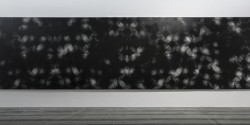
Kiev art life slowly returns to the pre-revolutionary norm. Quantity of events is back to prior density, but their quality and meaningfulness have increased significantly. It seems these days everyone commit to what they do with all seriousness and responsibility.
PinchukArtCentre got back to practicing loud vernissages [which were] interrupted by revolutionary happenings before. One of the newly opened projects is called “Fear and Hope.” It is notable for the reason that for the first time in the Centre’s history, curators have managed to do without visiting stars of the global art-scene, and have taken on three Ukrainian artists – PinchukArtCentre Prize winners – Zhanna Kadyrova, Nikita Kadan and Artem Volokitin.
The second [project] is a personal project of Alevtina Kakhidze “TV Studios” in PacUA.
Fear and Hope is not an all-in-one exhibition, but tree personal projects separated by different rooms. Curators sought to show us self-sufficiency of each artist and their personal evolutions though individual relationships with History, thus combined them under one title. Nevertheless, the exhibition is not exactly about fears and hopes.
The artists remind us about recent events, vesting them in bright imagery; they warn us and bring into focus our own emotions. The chilling fear and hope for better is not a theme, but a context of reality faced by Ukrainian society and artists as part of it.
If you take reality given in perception and take away unnecessary parts, for example, redundant words – you get art. It is able to answer our questions even when political scientists, sociologists and philologists cannot. It would not be an exaggeration to say that of all functions art has, the main for us today is the diagnostic one.
The main thing which can be diagnosed judging by the exposition – we all grew up a lot during the past few months. Furthermore, Zhanna, Nikita and Artem - laureates of prize for young artists - moved up to the next level, giving way to younger generation. They are playing now in the A league together with Jan Fabre and other prestigious artists from the collection of Victor Pinchuk
Two of the three artists, Nikita Kadan and Zhanna Kadyrova, broke into the art scene atop of the wave of the revolution in 2004. At the exhibition we see the result of the way they have covered over the past nine years. They are the representatives of their own generation sprouted after the previous revolution and, perhaps, the ones who have made the following one possible. In my opinion, the exhibition tells not about fear or hope, but how the whole generation of humans had to break free from romantic illusions and mature abruptly in extremely short period of time.
From the former infantile irony of Zhanna Kadyrova remained no trace. Even the series of her old photographs of 2003 loses its playful innocence, appearing within the same context of the Crimea-less Ukraine.
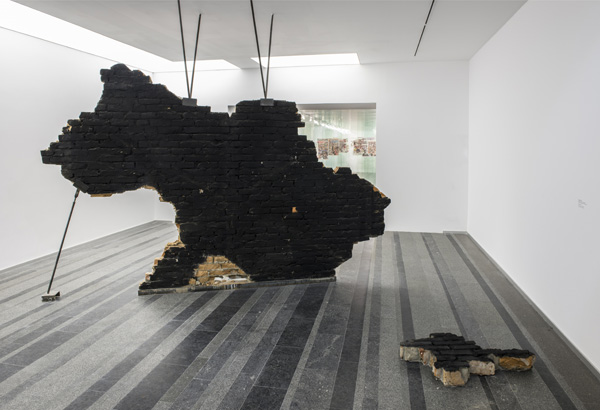
Characters-symbols wandering from the photo to photo turn into a prophecy, hide a threat, similarly to her project Crowd of 2013. The only new piece is a piece of a burnt wall shaped as a map of Ukraine, actually turns out to be a fragment of Soviet era.
It was not Zhanna who installed it; it was us who suddenly dashed upon it in the fume of burning tires. The metaphor is extremely simple, but its appearance blows your mind. It is amazing how Zhanna remaining true to her artistic methods and themes, can become so serious all at once.
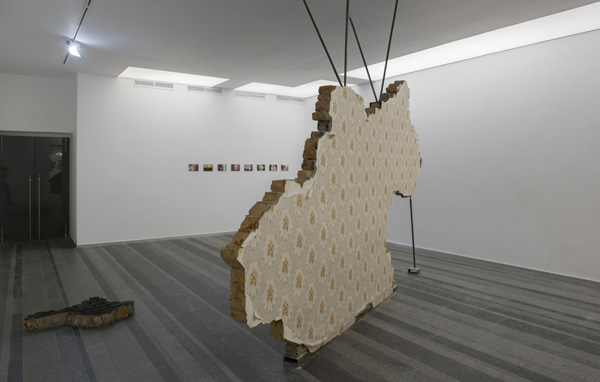
Artem Volokitin with his new works resembles himself even less than in Zhanna’s case. Before, he never had to leave his comfort zone in art. It has always been a reminder of a “golden age”, and the only conflict that was familiar to this artist was an achievement of personhood, a struggle with himself, but never a social upheaval.
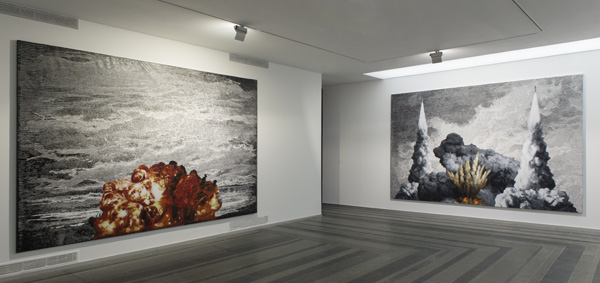
Everything changed this winter. For the first time his works, which were nothing like typical himself, were published in our February revolutionary questionnaire. The growing sense of anxiety and imminent threat are clearly visible.
The only one who left faithful to himself appeared to be Nikita Kadan. His seriousness and criticism reached colossal proportions.
Following the memorial which he won the award for, Nikita built the walls of a museum within the Center, hinting at a conditional space of ideology.
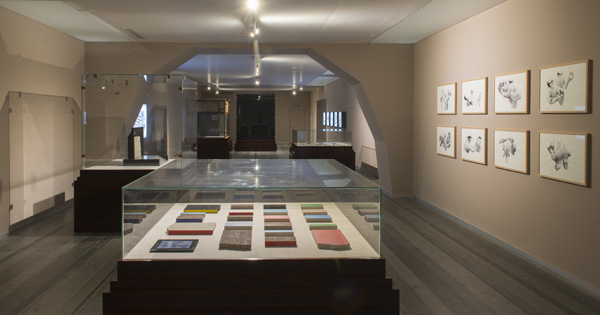
The author deliberately confronts form (specific museum facilities referring to the sacred silence of eternity) and the content (filling museum showcases with recorded facts of contradictions he spotted in reality). In this way, Nikita tries to show how ideological myths are constructed.
Paradoxically, the only thing that prevents this smart idea to succeed is a viewer who looks in the window and sees only his reflection. A modern man is devoid of the logic of reverence for museum’s authority which the artist is trying to exploit.

On the fourth floor, next to a large and beautiful exhibition of Jan Fabre, in a secluded space of PacUA quietly hides Alevtina Kahidze who wants to show us what artistic fiction and television picture have in common.
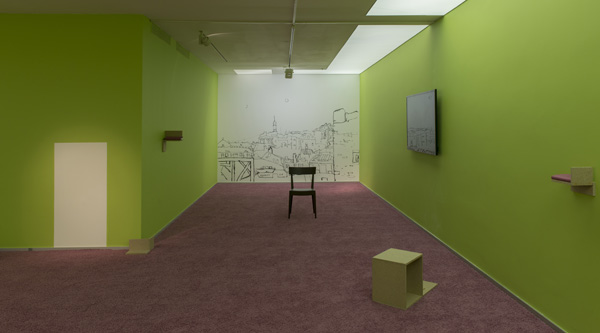
In the room with the purple carpet and light green walls, you do not immediately realize where you are - this fun area so much disaccords with the rest of the center’s variety [of works]. Everything you find in this room seems infinitely detached from the surrounding "street" reality. For our suddenly matured and accustomed to a serious agenda consciousness, Alevtina’s project may even seem to be a ridiculous game. But I assure you, if you show proper persistence and curiosity, when you walk out of this room you will have a chance to come out a little bit different than before having experienced the most useful of all possible experiences.

Through objects, books and situations, Alevtina shows how creative reality is constructed, tells us what it means to be an artist, teaches to see non-obvious things, how to start noticing what is never in the spotlight and other useful things.
In however ways artists may seem strange to us, they definitely can do one very important thing - they are able to collect the fragments of scattered reality, paving the way through it from the past to the future. Is it not what all of us need to have today?